VET 2025_ Event Postponement
This is to inform that due to some circumstances beyond the organizer control, "2nd Edition of International Conference on Veterinary Science" (VET 2025) June 09-11, 2025 | Hybrid Event has been postponed. The updated dates and venue will be displayed shortly.
Your registration can be transferred to the next edition, if you have already confirmed your participation at the event.
For further details, please contact us at veterinary@magnusconference.com or call + +1 (702) 988 2320.
3D printing prosthetics
3D printing is the finest way to make the best animal prosthesis and provide animals a greater chance at survival. Dogs, cats, wild foxes, and other animals are frequently injured by vehicles, and these injured domestic and agricultural animals may require a leg amputation or how about wild animals such as elephants that lose a leg after stepping on a landmine, or even worse, when humans poach these animals and leave them in distress. These animals would have been deemed unfit for a quality existence and possibly put down around a decade ago. A fitted prosthesis may now be made thanks to additive manufacturing. Over time, software advancements have resulted in more comfortable and ergonomic animal prosthesis. While 3D printing allows for more lightweight, inexpensive, and personalised animal prosthetics, it's vital to understand that not all animal prosthetics are created equal. Indeed, some animal medical specialists and veterinarians are concerned that as such attachments become more common and 3D printing becomes more widely available, some animals may suffer as a result of poor workmanship.
- Customised Prosthetics
- Software and Solutions
- Realistic Medical Models
- Challenges

Marco Polettini
DVM, Italy
Andreia Freitas
INIAV/REQUIMTE, Portugal
Andreia Freitas
INIAV/REQUIMTE, Portugal
Kedibone Gloria Kgosana
Sefako Makgatho Health Sciences University, South Africa
Nnenna Ugwu
Anglia Ruskin University, United Kingdom
Rubens Dias de Melo Junior
Universidade Federal de Goiás, BrazilSubmit your abstract Today
Important Alert:
X


Title : Analyzing veterinary medicine residues in food: A comprehensive guide
Andreia Freitas, INIAV/REQUIMTE, Portugal
Title : Quantifying changes in facial expression following hot-iron disbudding under procaine hydrochloride and meloxicam treatment in Holstein dairy calves
Nnenna Ugwu, Anglia Ruskin University, United Kingdom
Title : Trypanosoma vivax in and outside cattle blood: Parasitological, molecular, and serological detection, reservoir tissues, histopathological lesions, and vertical transmission evaluation
Rubens Dias de Melo Junior, Universidade Federal de Goiás, Brazil
Title : Characterization of porcine rotaviruses in the Czech Republic
Romana Moutelikova, Veterinary Research Institute, Czech Republic
Title : Determination of Circulating Foot-and-Mouth Disease Virus Serotypes in Kenya (2023)
Hellen Mutua, Foot and Mouth Disease National Reference Laboratories, Kenya
Title : Welfare for Amazonian wild animals
Eliane Cardoso Carvalho Moraes, Jungle Warfare Training Center/ Army, Brazil